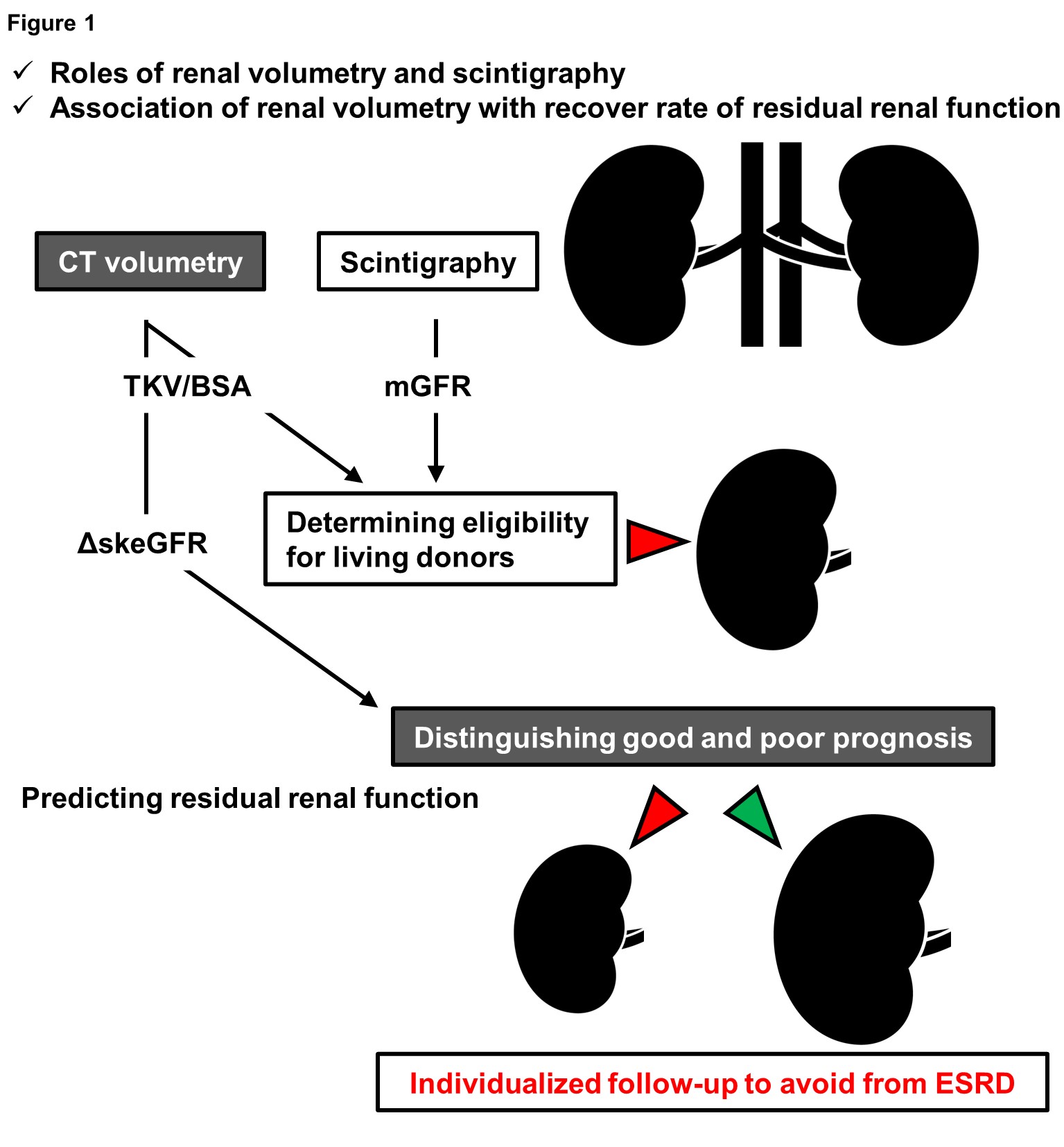Roles of renal volumetry and scintigraphy in living kidney transplant donors; contribution to early recovery of residual renal function
Shunta Hori1, Mitsuru Tomizawa1, Kuniaki Inoue1, Tatsuo Yoneda1, Kenta Onishi1, Yosuke Morizawa1, Daisuke Gotoh1, Yasushi Nakai1, Makito Miyake1, Kiyohide Fujimoto1.
1Urology, Nara Medical University, Nara, Japan
Introduction: Detailed criteria of living kidney donors (LKDs) have been still controversial in Japan, where living donor kidney transplantations are common because of the severe shortage of deceased donor sources. Transplant centers and surgeons are responsible for making decision considering balance the potential LKDs desire to donate against their future risk of end-stage renal disease and associated morbidity. In this study, the roles of volumetry and scintigraphy for preoperative and postoperative renal function were investigated and the association of volumetry and scintigraphy with the early recovery of residual renal function (RRF) was evaluated.
Method: We included 175 consecutive LKDs who underwent donor nephrectomy (DN) at our institution between 2006 and 2022 and retrospectively reviewed their medical charts. Kidney volumes were assessed by using preoperative enhanced computed tomographic images in the Volume Analyzer SYNAPSE VINCENT image analysis system. 99 m-TC diethylenetriamine penta-acetic acid (DTPA) scintigraphy was also used as a screening tool of renal function. Estimated glomerular filtration rate (eGFR) was used as renal function. Furthermore, a single-kidney eGFR (skeGFR) was evaluated and recovery rate (ΔskeGFR) was evaluated at 3 months after DN.
Results: The median age and follow-up period were 59 years and 73 months, respectively. This cohort comprised of 55 males and 81 females. Age >60, hypertension, and total kidney volume/body surface area (TKV/BSA) <170 were independent predictive factors for preoperative eGFR <80 (odds ratio [OR] 2.94, 95% confidence interval [CI] 1.32–6.52; OR 3.80, 95%CI 1.35–10.68; OR 4.97, 95%CI 1.98–12.47, respectively), whereas male and total measured GFR (mGFR) <80 were independent factors for preoperative eGFR <70 (OR 0.22, 95%CI 0.093–0.54; OR 3.52, 95%CI 1.41–8.80, respectively). Residual kidney mGFR <40, preoperative eGFR <80, and ΔskeGFR ≤9 were independent predictive factors for postoperative eGFR <45 (OR 2.96, 95%CI 1.05–8.29; OR 20.27, 95%CI 5.93–69.33; OR 5.64, 95%CI 2.08–15.27, respectively), whereas residual KV/BSA <85 and ΔskeGFR ≤9 were independent predictive factors for postoperative eGFR <60% of preoperative eGFR (OR 2.81, 95%CI 1.19–6.66; OR 5.43, 95%CI 2.27–13.01, respectively). Furthermore, TKV/BSA <170 was an independent predictive factor for early recovery of skeGFR (OR 2.56, 95%CI 1.20–5.46).
Conclusion: Our findings suggest that parameters calculated by volumetry can be a reliable screening and prognostic tool for choice of LKDs and assessment of split renal function in LKDs before DN, whereas renal scintigraphy also could be an important role of selecting optimal LKD, especially patients with low preoperative renal function. In addition, parameters calculated by volumetry can be useful in estimating recovery rate of RRF after DN.
Further investigation is needed to establish systematic criteria for LKDs in Japan.

[1] computed tomography volumetry
[2] donor nephrectomy
[3] living donor kidney transplantation
[4] residual renal function
[5] renal scintigraphy
